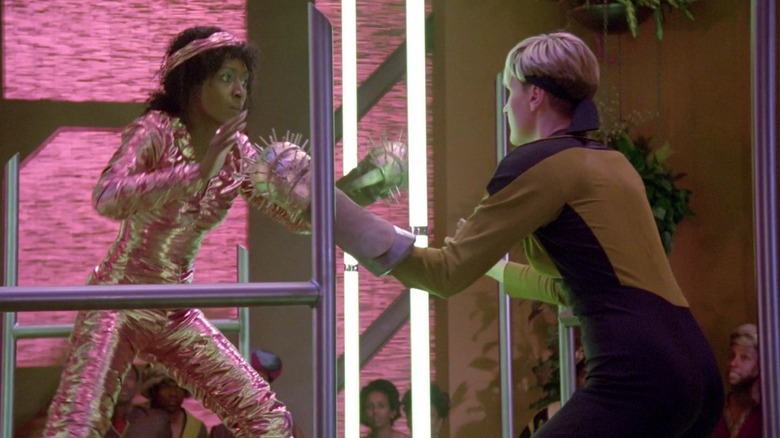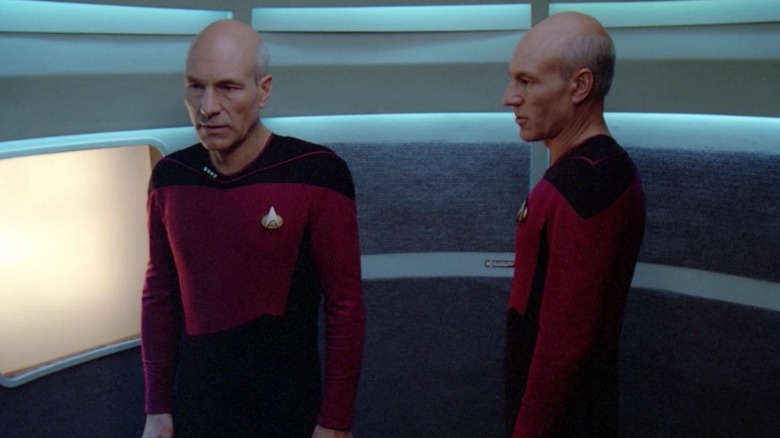TNG’s early writers’ room was full of trouble and bad blood

As many Trekkies could tell you, Gene Roddenberry created “Star Trek: The Next Generation” out of spite. When “Star Trek: The Motion Picture” came out in 1979, it was a big turning point, taking a cheesy science fiction series and turning it into a massive, psychedelic $44 million space opera. It was a gigantic and dangerous space cloud that appeared out of the cosmos and began to bear down on Earth, its mission unknown. The film ended with the merging of human beings with ineffable machine intelligences beyond our comprehension. It was intoxicating and brilliant, closer in spirit to “2001: A Space Odyssey” from the previous decade than to contemporary “Star Wars.”
But when “The Motion Picture” didn’t make as much money as Paramount wanted, Roddenberry was unofficially removed from further involvement in the sequels. A new creative team took over and produced three sequels from 1982 to 1986, all much more successful. Roddenberry didn’t like that control of his creation was being taken away from him and decided to one-up the big guys by creating his own “Star Trek” series. This time, he would lean even more heavily on the utopian themes of his original series and, more importantly, retain full creative control over it. By 1986, he had gathered most of what he needed to make “Star Trek: The Next Generation,” a series set a century after the original series.
Of course, as William Shatner’s 2014 documentary “Chaos on the Bridge” details, the first two seasons of “Next Generation” were behind-the-scenes chaos. Roddenberry regularly rewrote scripts without the other writers’ knowledge, and there was much discussion about who should actually be in charge. Roddenberry clashed with almost everyone and micromanaged everything to the point of oblivion. These tense feelings were vividly recalled by Ronald D. Moore, one of the most famous writers of “Next Generation” beginning in its third season. On a recent episode of “The Sackhoff Show,” Moore said he came to “Next Generation” in 1988 amid a lot of animosity and “bad blood.”
The first two seasons of Star Trek: The Next Generation were behind-the-scenes chaos
Most Trekkies will also be able to tell you that the first two seasons of “Next Generation” are a bit messy. As the series found its way, it produced some pretty awful episodes backed by some pretty awful ideas. “Code of Honor” (October 12, 1987) is often called “racist”, while “Angel One” (January 25, 1988) is “sexist”. In previous interviews, Moore explained how he got his start on “Star Trek” while touring the set during the second season. He handed an unsolicited script to a friend who was working on the series, which ultimately led to him finding an agent and getting hired.
But he basically entered chaos. He recalled the constant change of staff members and the control that Roddenberry so confidently exercised over the series. There was a bad atmosphere and a lot of people hated each other. He doesn’t call anyone by name, but non-Trekkies might want to look up figures like Maurice Hurley and Leonard Maizlish, who apparently contributed to the chaos. As Moore says:
“The show was in turmoil. The first few seasons of this show were epically in turmoil. […] The first two seasons in particular, before I came on board, there was so much tension behind the scenes. […] Gene was still alive. Gene was throwing out scripts and firing writers and hiring others. And the writers were biting each other. Lots of inner turmoil and division over what the show is and isn’t. Just a lot of anxiety and anger. And people come and go.”
A lot has changed at the start of the third season. Michael Piller took over as showrunner and several new writers were hired, including Moore. The direction of the series changed, as it began to focus on singular characters in each episode, rather than the entire ensemble each time.
The veterans of the series had all become cynical
Moore said opportunity and desperation were the central tenets of working in the “Star Trek” offices when he came on board, and that the show’s previous writers had all become jaded. He described the tone of his new workplace this way:
“I joined the third season, and a few [writers] were veterans from the previous year. And they were cynical. “Yeah, it’s all good until it all explodes, kid. Okay, here we go. But we were also in this melee. […] We never had more than one scenario in advance. We would prepare the outlines and prepare the rhythm sheets. […] In the writers’ room, writing was just moving fast, trying desperately to get the pages out.”
Moore said he had to learn on his feet and the tone of the workplace was always one of panic. The entire show seemed to be perpetually behind schedule, and the speed did not allow for careful polishing or careful consideration of the story. Moore understood that he was only appreciated at the beginning because everyone else desperately needed more help. As he said:
“Part of their welcome was necessity. ‘We need a body! Could you write? Go write this scene!’ And all you would have to do is write it, hand it in, do it again. You’ve built that muscle memory that allows you to write quickly and do it today. He must be there tomorrow. Something is pulling. It had to be done. You can’t have writer’s block. You can’t be afraid. Just put something on this page and render it. And that was the atmosphere of that first season. It was a crucible…but I loved it.”
Moore ended up staying on the show until its seventh and final season, and even co-wrote the films “Star Trek: Generations” and “Star Trek: First Contact.” He also worked extensively on “Star Trek: Deep Space Nine” and the last two seasons of “Star Trek: Voyager.” Obviously, the chaos eventually dissipated.






